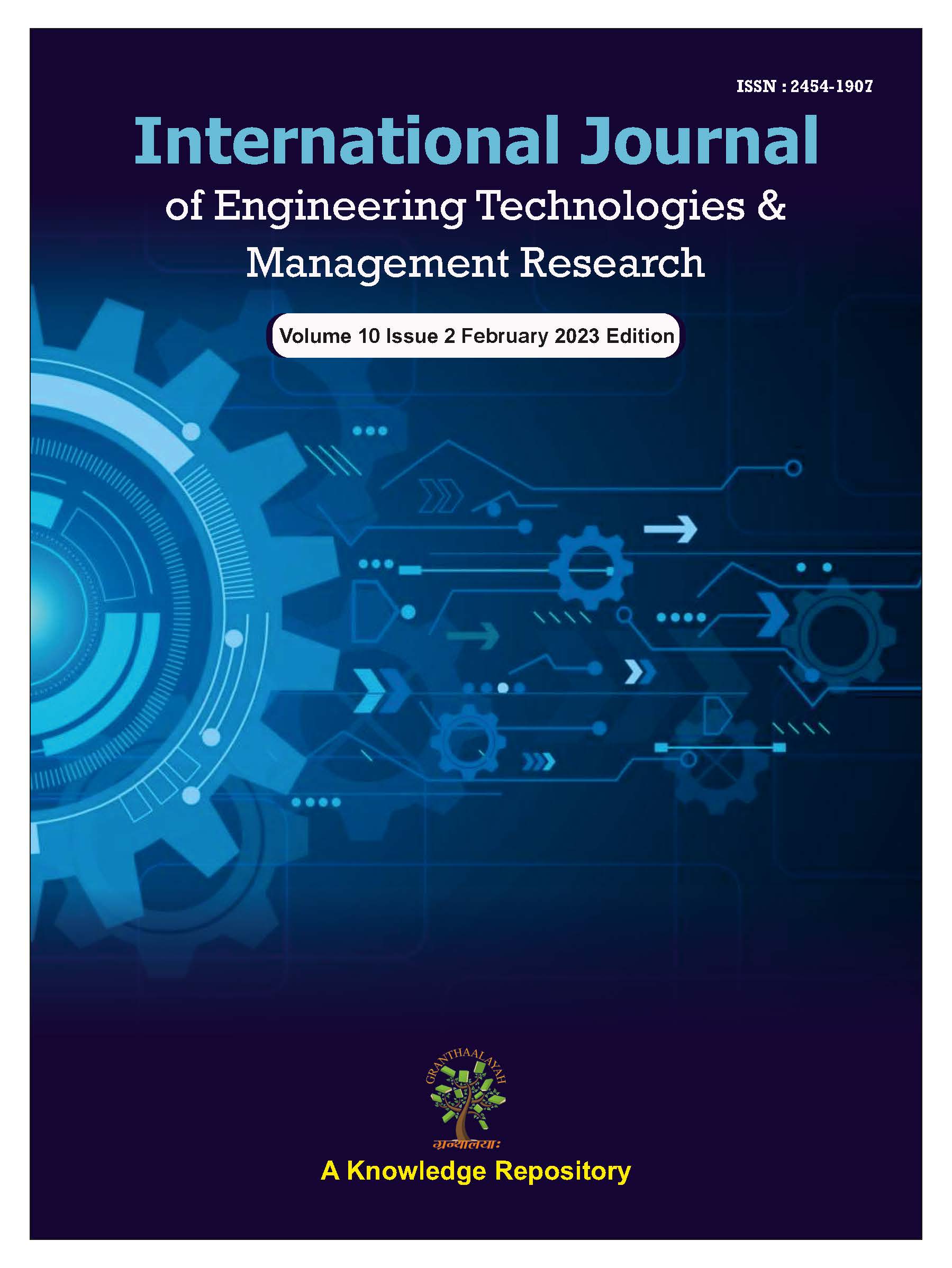SMART BANKING MANAGEMENT SYSTEM USING DEEP LEARNING AND CONVERSATIONAL AI
DOI:
https://doi.org/10.29121/ijetmr.v10.i2.2023.1598Keywords:
Banking, Deep Learning, Conversational Ai, Management, BrmsAbstract
The Banking Record Management System (BRMS) aims to revolutionize traditional banking operations by addressing critical challenges such as security vulnerabilities, inefficiencies in manual record keeping, and delayed customer services. By integrating advanced technologies like Long Short-Term Memory (LSTM) networks and intelligent chatbots, the system ensures secure, efficient, and real-time management of banking records while enhancing customer experience.
The core functionality of BRMS is to provide a centralized, highly secure database for handling sensitive customer details, account records, and transaction histories. Using LSTM networks, the system learns from historical transaction patterns, predicts potential fraudulent activities, and ensures error reduction by automating complex financial processes. This predictive modeling not only enhances data accuracy but also strengthens data security, preventing unauthorized access through multi-tiered authentication and encryption mechanisms.
The inclusion of chatbots significantly improves customer interaction by offering 24/7 support for balance inquiries, account management, transaction tracking, and loan applications. These AI-driven chatbots automate the resolution of common queries, thereby reducing the workload on bank employees and ensuring faster data retrieval and customer satisfaction. The system also supports automated report generation, allowing banking officials to easily access daily, monthly, and yearly financial summaries critical for strategic decision-making.
Further, BRMS emphasizes automation of core banking processes such as account creation, fund transfers, and withdrawals, minimizing human errors and increasing overall productivity. Regular data backup and recovery mechanisms ensure business continuity even during system failures or disasters. Additionally, user authentication and role-based authorization safeguard sensitive information, granting access only to authorized personnel.
By seamlessly merging predictive analytics, automated chat interfaces, and secure record management, the proposed BRMS project promises a reliable, fast, and intelligent banking environment, thereby meeting the evolving needs of modern banking institutions and their customers.
Downloads
References
Anderson, C. (2021). Designing user-centric banking interfaces. Human-Computer Interaction Studies.
Anderson, C. (2021). Ethical implications of AI in banking. Human-Computer Interaction Studies.
Brown, E. (2021). Ensuring data integrity in financial applications. International Journal of Data Science.
Brown, E., & Green, S. (2021). Operational gains from AI-based financial systems. Journal of Financial Technology.
Brown, P. (2021). Time-series forecasting with LSTM networks in banking. Data Science and Finance Review.
Chandra, R. (2022). Challenges and opportunities in smart banking transformation. AI in Financial Services.
Chandra, R. (2022). Future of smart banking with AI and deep learning. AI in Financial Services.
Gupta, S. (2020). Challenges of manual banking processes. Journal of Financial Innovation.
Gupta, S. (2020). Predictive analytics in financial services using deep learning. Financial Innovation Journal.
Johnson, L. (2019). AI for regulatory compliance in banking. Journal of Risk Management and Compliance.
Johnson, L. (2019). Real-time data retrieval in online banking. Computing in Financial Services.
Kaur, P., & Verma, R. (2021). Security frameworks for online banking. Cybersecurity in Banking Sector.
Kim, H. (2020). Effective branch management through digital systems. Journal of Retail Banking.
Kumar, V. (2022). Authentication mechanisms in online banking. Information Security Review.
Kumar, V. (2022). Fraud detection using deep learning in financial systems. Journal of Information Security.
Lee, J., & Kim, S. (2022). Deep learning applications in finance. Journal of AI and Machine Learning.
Lopez, A. (2021). Customer sentiment analysis in financial services. Financial Systems Design Journal.
Lopez, A. (2021). Structuring account types for online banking platforms. Financial Systems Design Journal.
Mittal, A., & Arora, R. (2021). Impact of AI-driven conversational agents on banking customer service. Journal of Business Technology.
O'Reilly, S. (2022). Future of banking with AI and deep learning technologies. Banking Technology Insights.
O'Reilly, S. (2022). Managing account data in the digital era. Banking Technology Insights.
Patel, D. (2020). Risks of manual data management in banks. Journal of Risk Management.
Rao, H. (2020). Automation and its impact on banking efficiency. Journal of Economic Perspectives.
Rao, H. (2020). Automation and its impact on banking employment. Journal of Economic Perspectives.
Sharma, A., & Singh, R. (2021). Modernizing banking systems through automation. International Journal of Banking Technology.
Singh, M. (2021). Comparative analysis of manual and automated banking systems. Banking and Technology Journal.
Smith, P. (2020). Cloud-based smart banking systems: Opportunities and challenges. International Journal of Cloud Applications.
Smith, P. (2020). Disaster recovery planning in financial institutions. Journal of Business Continuity.
Tan, W. (2020). AI chatbots for enhanced customer service in banking. Journal of Digital Finance.
Wang, X. (2021). Customer relationship management in banking using AI. Journal of Banking Operations.
Wang, X. (2021). Personalized banking using machine learning. Journal of Banking Operations.
Published
How to Cite
Issue
Section
License
Copyright (c) 2023 Vishal Yadav, Surender, Divyansh Singh, Sahil Ali, Stuti Saxena

This work is licensed under a Creative Commons Attribution 4.0 International License.
License and Copyright Agreement
In submitting the manuscript to the journal, the authors certify that:
- They are authorized by their co-authors to enter into these arrangements.
- The work described has not been formally published before, except in the form of an abstract or as part of a published lecture, review, thesis, or overlay journal.
- That it is not under consideration for publication elsewhere.
- That its release has been approved by all the author(s) and by the responsible authorities – tacitly or explicitly – of the institutes where the work has been carried out.
- They secure the right to reproduce any material that has already been published or copyrighted elsewhere.
- They agree to the following license and copyright agreement.
Copyright
Authors who publish with International Journal of Engineering Technologies and Management Research agree to the following terms:
- Authors retain copyright and grant the journal right of first publication with the work simultaneously licensed under a Creative Commons Attribution License (CC BY-SA 4.0) that allows others to share the work with an acknowledgment of the work's authorship and initial publication in this journal.
- Authors can enter into separate, additional contractual arrangements for the non-exclusive distribution of the journal's published version of the work (e.g., post it to an institutional repository or edit it in a book), with an acknowledgment of its initial publication in this journal.
- Authors are permitted and encouraged to post their work online (e.g., in institutional repositories or on their website) before and during the submission process, as it can lead to productive exchanges, as well as earlier and greater citation of published work.
For More info, please visit CopyRight Section






















